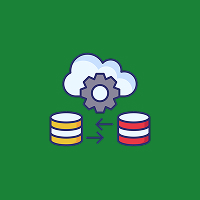In our current digital-centered world, data is the pillar of innovation, informed decision making and customer experience and businesses across all verticals are producing, consuming and pivoting off of enormous structured and unstructured datasets every second of the day. Unfortunately, traditional database management systems (DBMS) were built to work with much smaller, slower datasets and they are struggling to manage the dimensions of the scale, pace and diversity of our datasets.
That leads us to the role of Artificial Intelligence (AI) – not as a nice-to-have option, but an absolute need-to-have! AI is revolutionizing database management by not only automating redundant tasks, it is allowing decision makers to focus on their real decisions while AI works behind the scenes to optimize performance, efficiency and competency with minimal human interaction and supervision. Throughout this blog, we will explore the many ways AI is changing the course of the future of databases, and the importance of keeping pace with AI evolution as businesses and tech professionals.
1. From Manual to Intelligent: Re-envisioning technologies
Historically, database management tasks such as query tuning, indexing, maintenance and performance tuning have relied on human effort. Each of these actions requires many hours to perform and there is room for potential human error. Over the years, we have begun to see artificial intelligence bring us to a new level of automation and intelligence in databases. Today, databases can learn from historical data, and begin to learn and self-optimize, while never forgetting their original patterns.
There are even AI engines that will self-tune by observing legacy workloads and prepare themselves by making changes to their indexing and query execution patterns, without human effort. They can self-heal by preparing for errors or faults before they happen, and utilizing preemptive measures. In summary, this approach prevents errors and downtime and keeps the performance of databases optimized at all times.
AI can take automated actions to perform complex activities at astounding efficiency: building schemas, managing change, and making life easier on database managers lowers supply costs and execution time of operational activities. Complex procedural actions that took hours or days can now be performed in seconds using AI-enabled database engines.
2. Improved Performance and Scalability
Organizations are transferring to cloud environments and distributed architectures so scalability is becoming an important aspect. The power of AI improves performance and scalability as it can automatically manage and optimize cloud resources according to real time requirements and overall use.
For example, on cloud-native platforms such as Google BigQuery and Amazon Aurora, AI algorithms can monitor workloads and automatically determine when to scale storage or compute units. This allows databases to absorb projected spikes in demand without needing to slow down performance or pay for unnecessary capacity. In high analytics applications, AI is also useful managing concurrent queries, optimizing cache mechanisms and improving response times.
Load balancing, which requires frequent monitoring and tuning, is now handled easily and seamlessly by AI. During load balancing, AI can observe all access patterns, spot bottlenecks and redistribute workloads to guarantee no server gets over-weighted. These capabilities are part of the AI trend and matter most for businesses and organizations running global applications where performance and uptime is vital.
3. Predictive and Prescriptive Insights
AI not only improves the operations of a database, it can deliver predictive intelligence from the underlying data. Databases that leverage machine learning identify trends and patterns in data that the human eye often misses, delivering prescriptive intelligence and actions instead of relying on reactive responses after issues arise.
For example, an AI-enabled database can examine patterns of user behavior and then be able to predict upcoming fulfillment demand for a certain product. It can allow businesses to proactively respond to inventory and marketing initiatives. Furthermore, it can also detect subtle pattern changes in how the data is being accessed, moment-to-moment, and identify warning signs indicating the potential for a system overload or failure, as well as making recommendations to avoid these issues.
In other words, prescriptive analytics simply goes forward by prompting users of a certain problem or pending issue, to having AI provide an action recommendations to minimize the effects of a potential problem. Rather than simply alerting users to an issue, AI will also provide a recommended action to take, such as rerouting traffic to an alternative work-around, changing the rules for data replication, or prioritizing certain operations based on the goals of the business.
4. Improved Data Security and Anomaly Detection
As cyber attacks grow more sophisticated, there is no greater challenge for any organization than securing sensitive data. As we have discussed, traditional security models tend to be reactive, dealing with security breaches only after there is a breach to deal with. AI has a proactive security approach by continuously monitoring the database activity and detecting anomalies in real time.
AI systems can learn what is considered ‘normal’ behavior in an organization’s database and immediately identify when a database is deviating from its learned behavior that might indicate a malicious act, such as the security breach attempts, unauthorized attempts to access sensitive data or information, data exfiltration, or injection attempts. By combining AI with behavioral analytics, databases can identify not only external threats, but also internal threats through anomalies in data interactions.
5. Natural Language Processing for Easier Access
Traditionally, querying a database almost always required a structured query language, like SQL, which limited access to just the technically trained; and now, using artificial intelligence, there is natural language processing (NLP) which allows for greater access to databases in everyone’s language (English or others we use).
Imagine a marketing executive asking, “what were our top-selling products in Q2?” and received precise and accurate results about the top-selling product and how much revenue they have generated in real time without writing a single line of code. These NLP interfaces provide access to everyone to their respective databases without having to go through a technical resource team; empowering non-technical departments to operate independently and get to their decisions faster, while making more competent data-driven decisions.
Improved access breaks down bottlenecks in companies and allows teams across sales, HR, finance, and operations to actively use data for the greater good. It fosters a culture where anyone can regularly report insights whenever needed.
6. AI used for data cleansing and integration.
The value of a database is only relative to the data quality. Yet the data we have comes from many sources, in various formats, that can be full of errors, duplicates, and holes. Data cleansing is an endless exercise and painstaking to do with our people however AI cleans it up with a surprising amount of speed to be accurate.
AI tools can identify inconsistent records, recommend virtuous corrections, fill in missing values with predictive models, and combine overlapping records from different sources. These tools are improving data accuracy, while minimizing the time analysts spend preparing data for use, thus speeding time to insight.
Moreover, AI is streamlining data integration across a range of platforms. AI can intelligently map, transform, and combine data from legacy systems, cloud apps, IoT devices, social media, and other data sources into a unified view that is ready for analysis or machine learning.
Conclusion
Artificial Intelligence is fundamentally altering the database management landscape today. Activities that once required groups of experts working together over weeks or months are now becoming faster, smarter, and more autonomous.
From driving self-tuning performance and auto-scaling infrastructures to better security and natural language queries, AI is creating new possibilities and efficiencies. AI is helping organizations graduate from reactive management to proactive, intelligent insights, and data decisioning.
Contact Us Today













 Database Development
Database Development












































